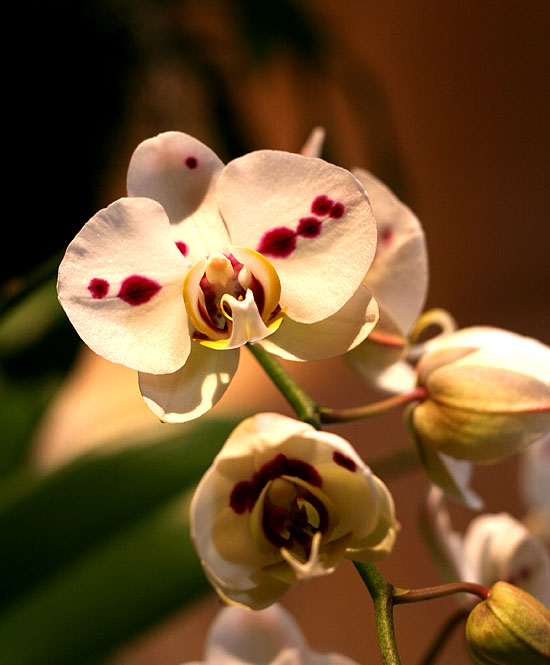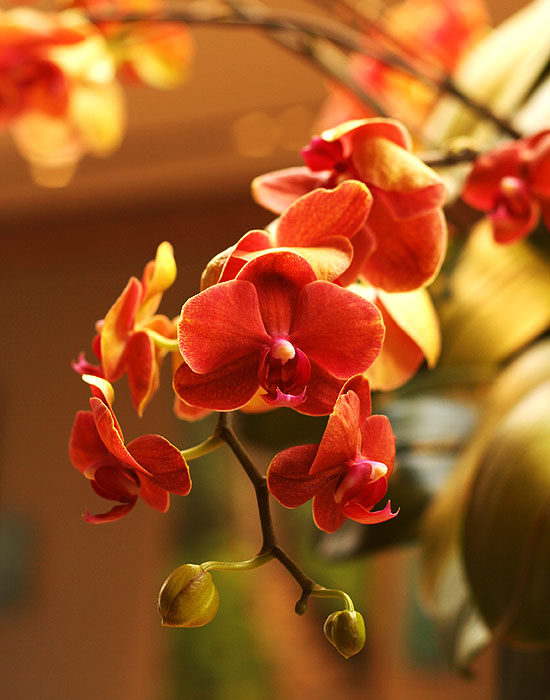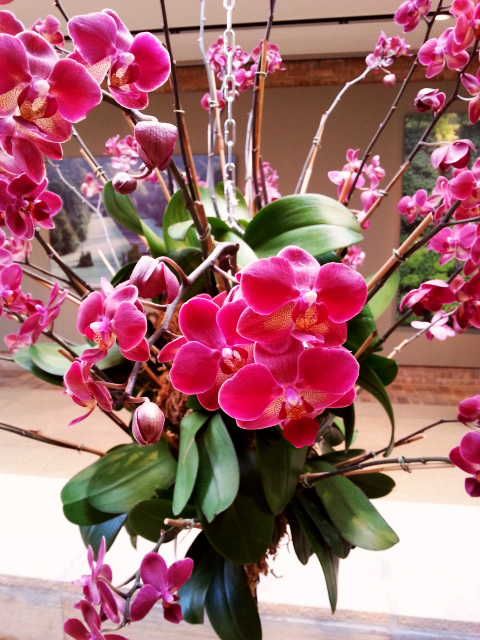Orchids have a reputation as being difficult and fussy plants that are out of reach for all except specialist orchid growers. Perhaps their history has kept you from attempting to grow an orchid, or from trying to landscape with orchids. Today orchids are as commonplace as ferns, and can even be bought in the floral department of your local grocery store. Let’s get to know orchids and how easy we can incorporate these botanical jewels in our gardens.

Spotted Phalaenopsis orchid via Ramon Gonzalez
4 easy-to-grow orchids you can add to your garden.
- Phalaenopsis (likes low light and reblooms easily)
- Oncidiums (can be grown outdoors in summer; bring it indoors during winter)
- Paphiopedilums (likes low light)
- Dendrobiums (likes low light)
Epiphytic vs. terrestrial: what’s the difference?
Generally speaking, we can break the vast family of orchids into two types for the sake of this article: epiphytic and terrestrial. Epiphytes are plants that use other plants as a substrate to grow. They attach themselves to via roots to a tree’s bark, branches and nestle into the crevices along trees. Orchids are great examples of epiphytic plants. Those potted orchids you see in stores would be growing attached to trees in their native habitat. Most cultivated orchids are epiphytes.

Red Phalaenopsis orchid via Ramon Gonzalez
So-called terrestrial orchids grow directly in the ground. According to the American Orchid Society, most of the native orchids of the United States and all of the native orchids of Europe are terrestrials. Unless you’re growing orchids in the subtropical and tropical areas of America that can support terrestrial orchids, we’ll be growing epiphytes in our gardens.
Growing orchids in pots, containers and in trees.
As stated above, the majority of orchids available for cultivation are epiphytes, and they are usually grown in specialized orchid pots. These pots are designed to allow water to drain freely. Potted orchids are easiest to grow because the pot can be moved around, or placed inside larger containers, and brought indoors during cold weather. Just because you garden in an area that experiences winter doesn’t mean you can’t grow terrestrial orchids. You can sink a potted terrestrial orchid in the ground and in larger containers, too.
You can grow orchids on trees in the subtropics and tropics. Growing orchids on trees may be possible in USDA Zone 11 of the continental United States, according to the AOS. Since orchid come from diverse habitats–from full sun to shady swaps–you will need to evaluate your garden’s exposure, and select an appropriate species or hybrid orchid.

Orchid topiary via Ramon Gonzalez
Orchid cultivation doesn’t have to be limited to growing in pots and mounted onto pieces of driftwood. In the photo above, a number of phalaenopsis orchids are growing in a round topiary form stuffed with moss, and suspended from the ceiling by a chain.
Don’t be afraid to experiment with placing orchids in your garden.
While orchids are commonly available in retail settings, they aren’t particularly inexpensive plants when compared to the all the annuals and perennials you can add to a garden to provide interest and color.
Their higher price points may make landscaping with orchids impossible if you’re gardening on a budget, but deals can be found. Look for a good orchid supplier and buy orchids in bulk. Oftentimes sellers will mark down orchids after they have stopped blooming and you can pick up an orchid for a few bucks. Buying clearance plants will allow you to build up your orchid collection and allow you to make a bigger impact in your garden.
As a small-space, urban gardener, I have a soft spot for miniature phalaenopsis orchids. They’re the easiest of all orchids to grow, and their miniature size makes them perfect plants if you want to fill a small space (window box) with orchids.
What’s your favorite orchid? Do you have any orchid gardening tips?

Share tips, start a discussion or ask one of our experts or other students a question.
No Responses to “Don't Be Afraid of Orchid Gardening”